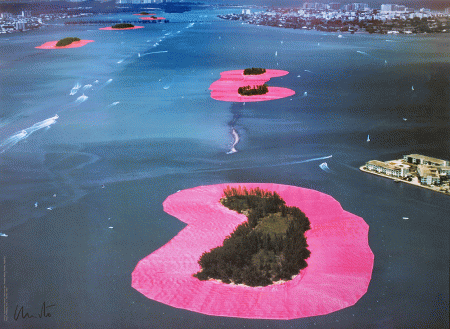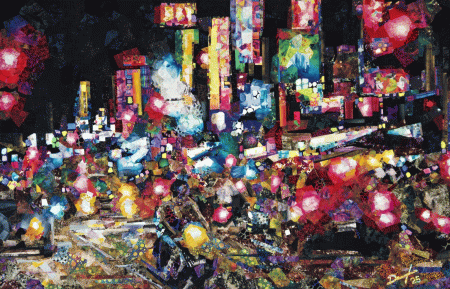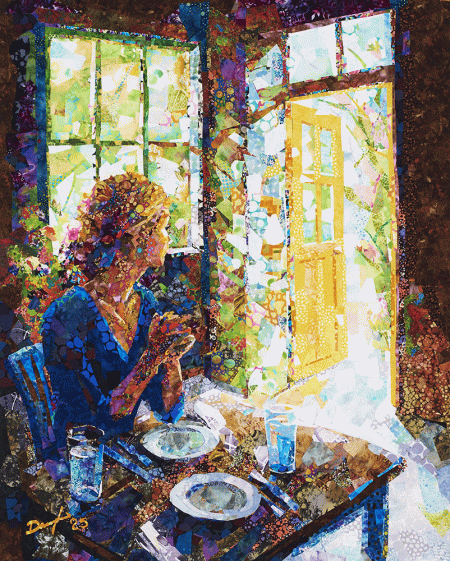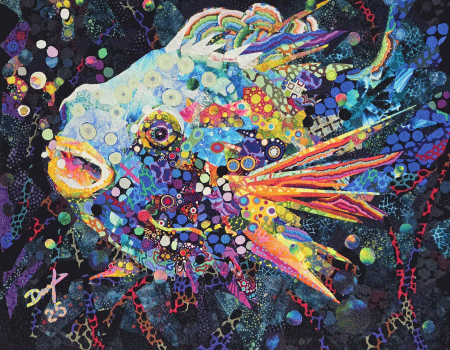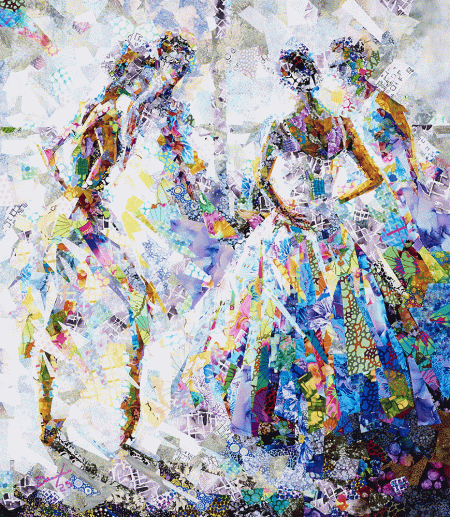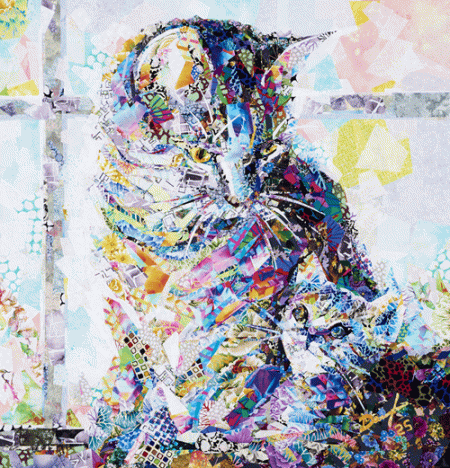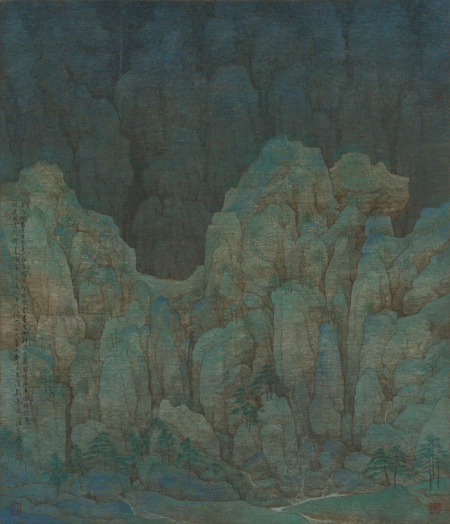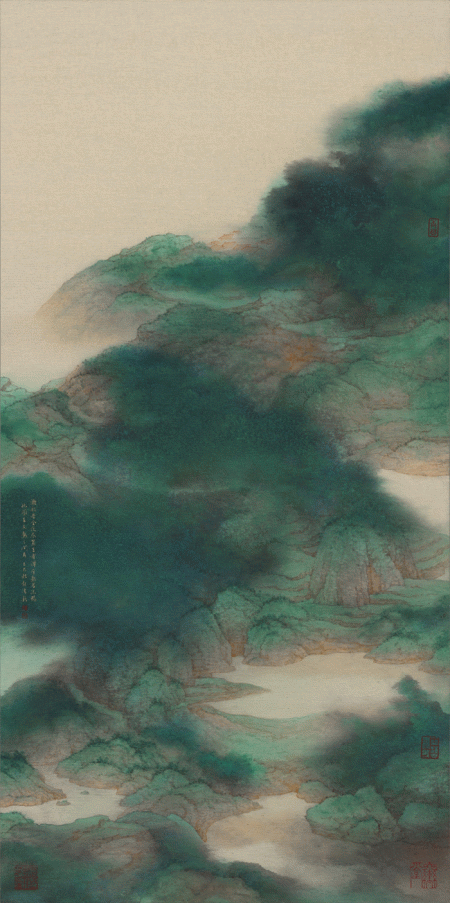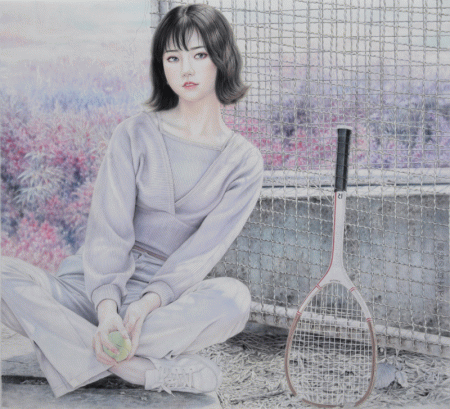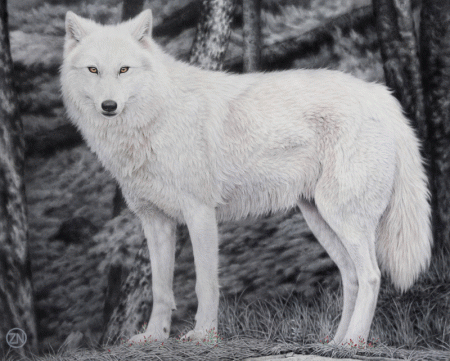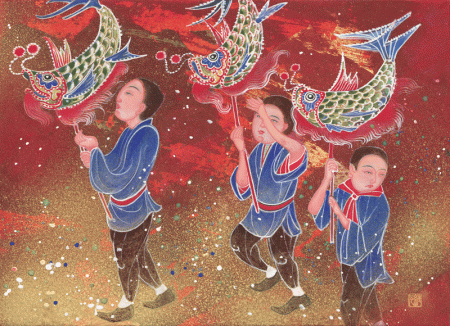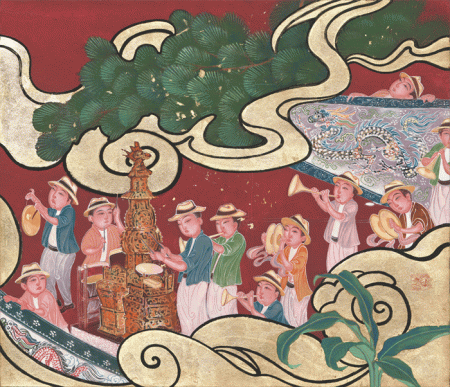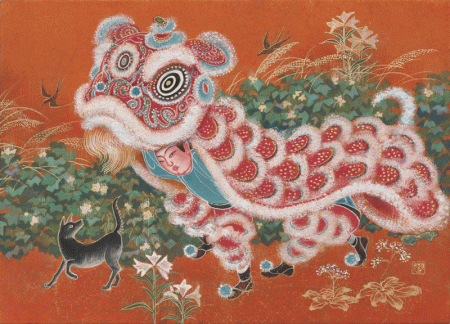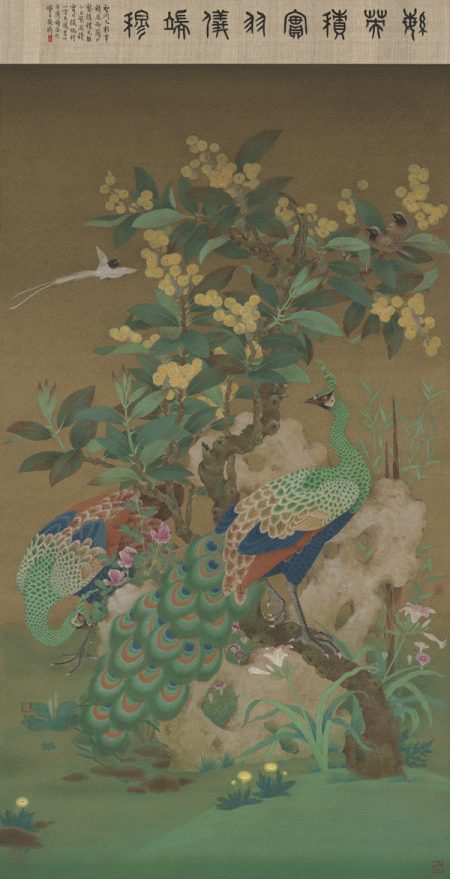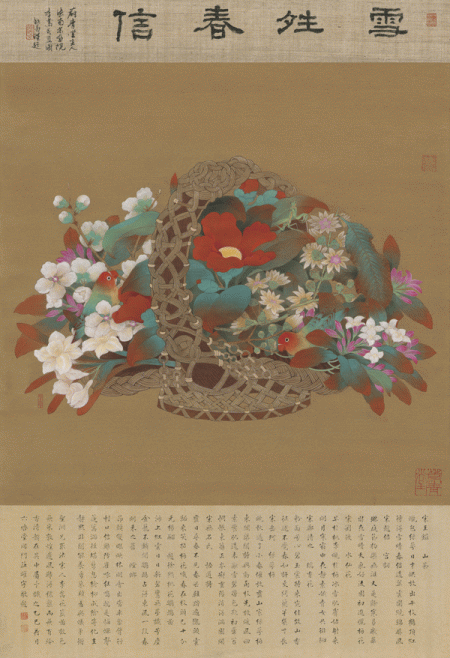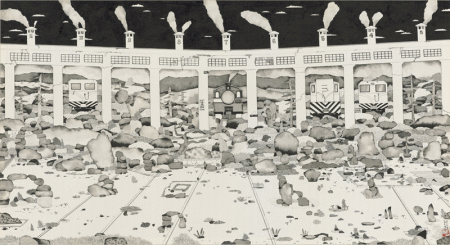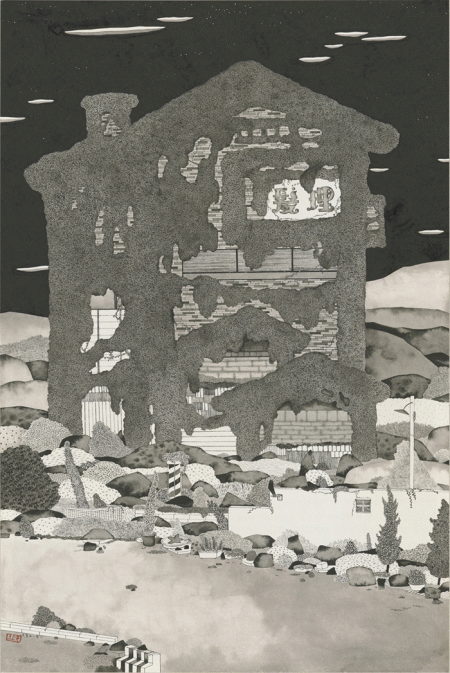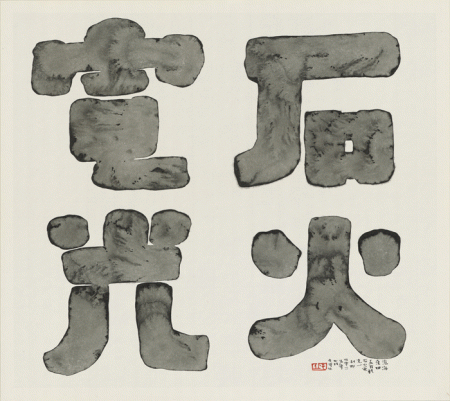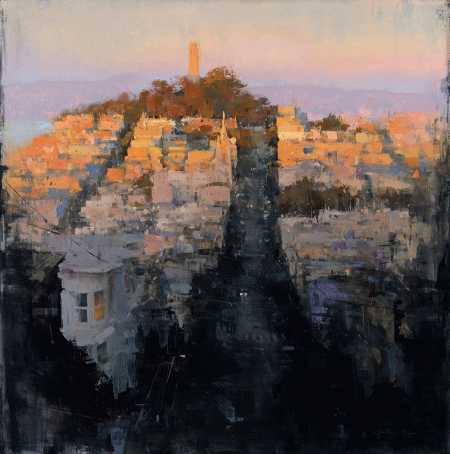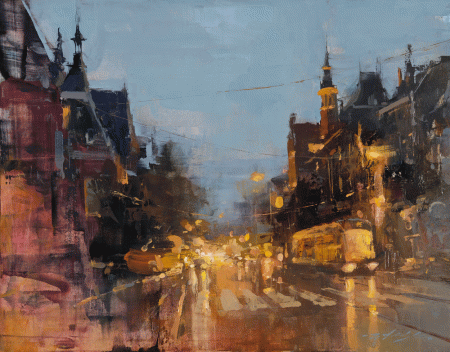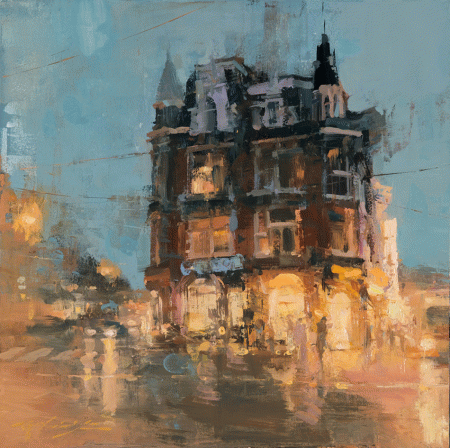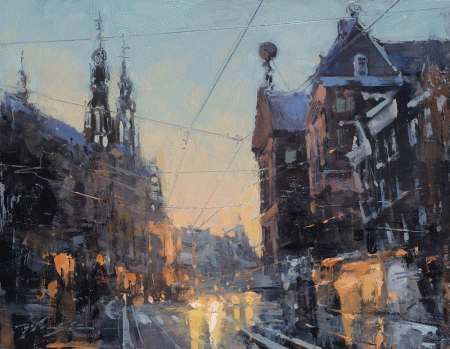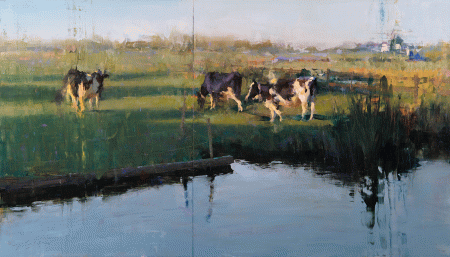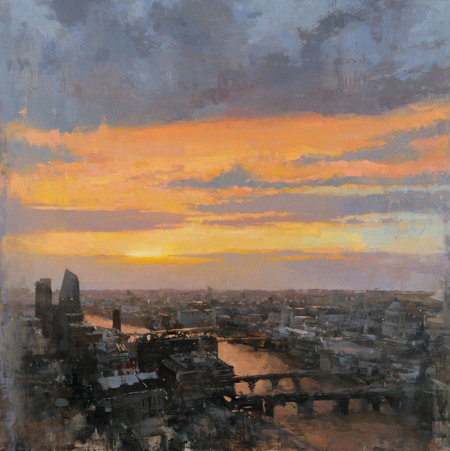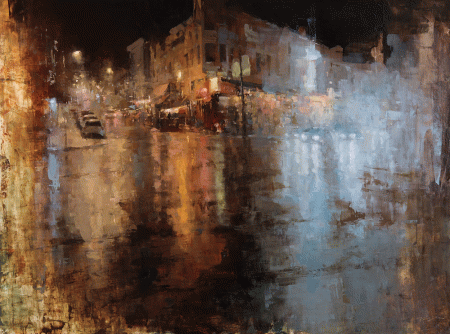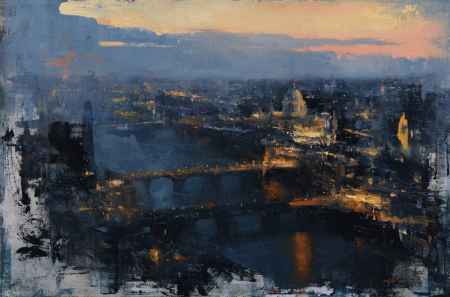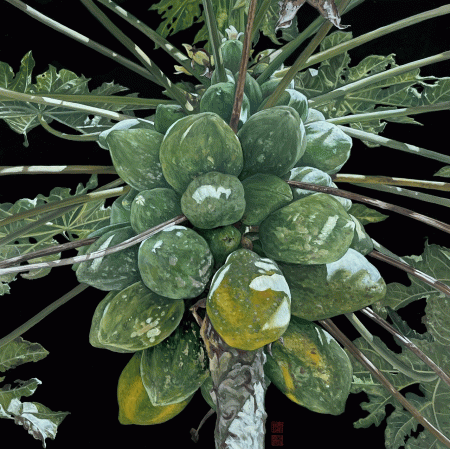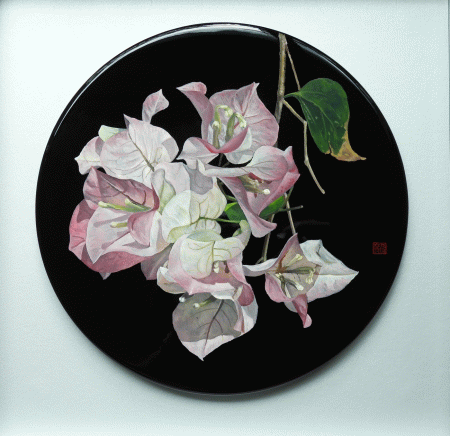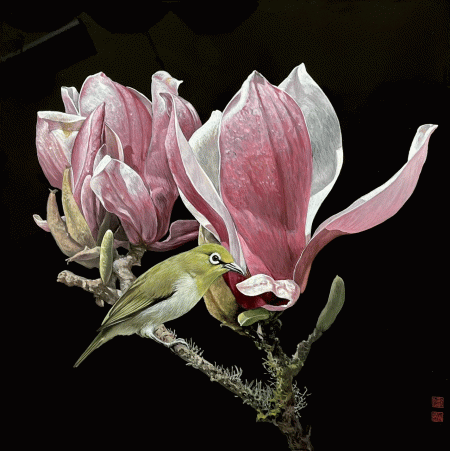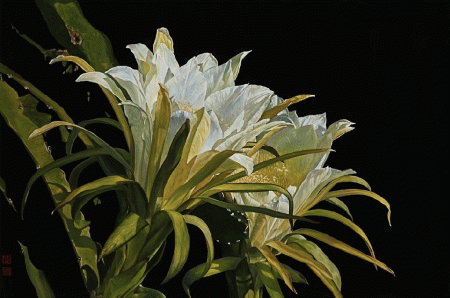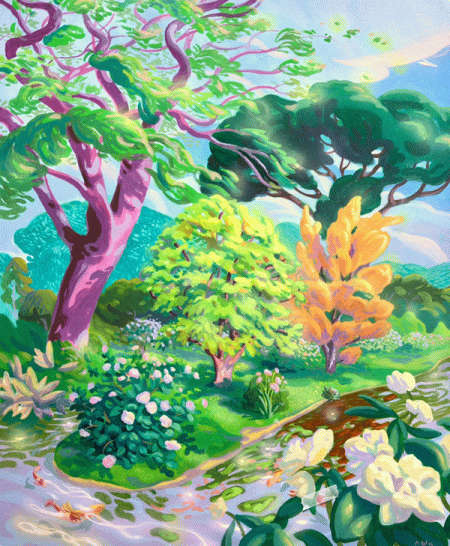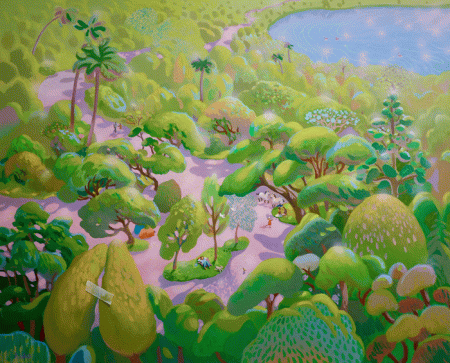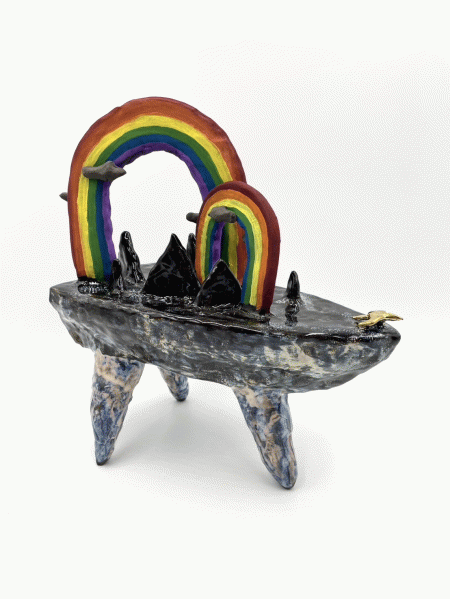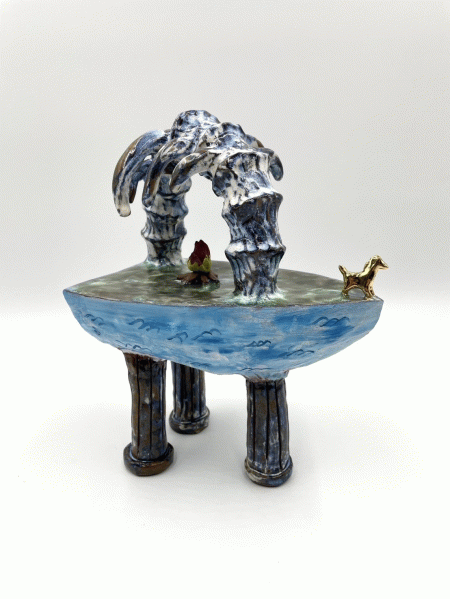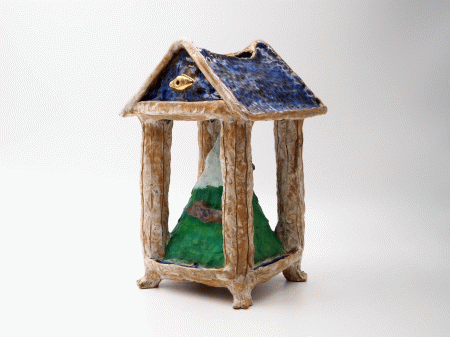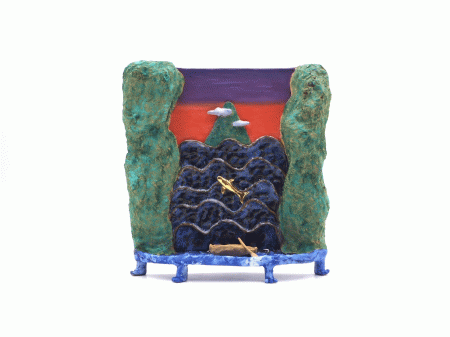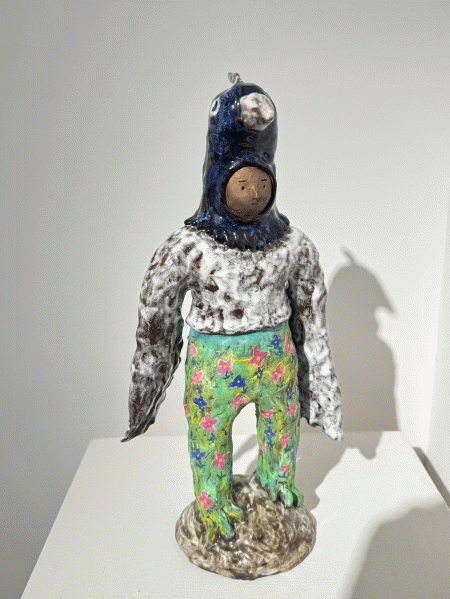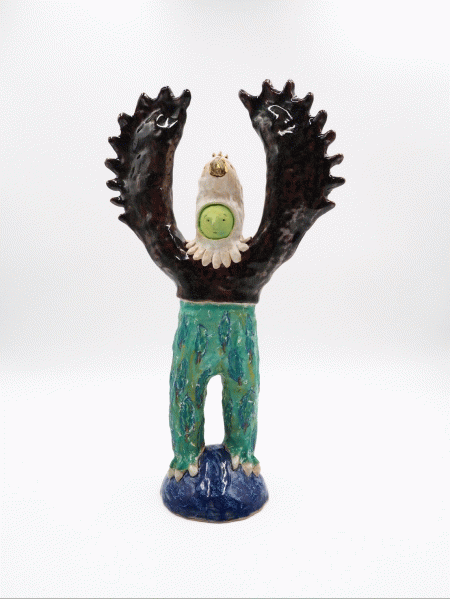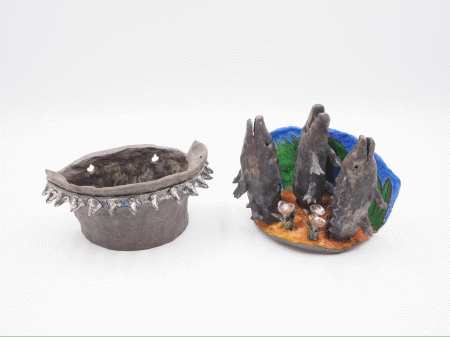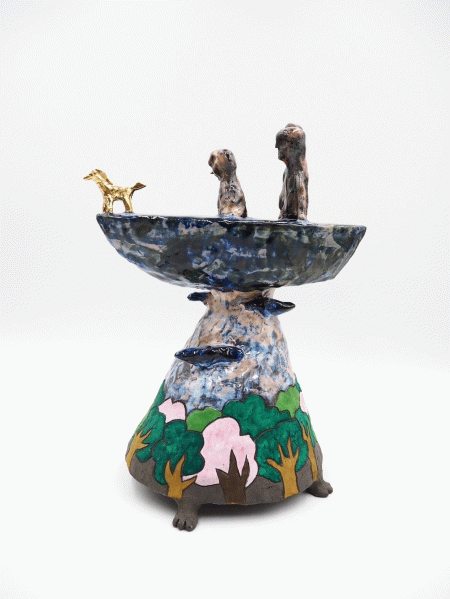Imavision Gallery
Taiwan
- Tel:+886 28233005
- E-mail:imaarts@ms13.hinet.net
- Official Site:www.imavisiom.com.tw
- Location:2F No.286 Sec 7 Chengde Road Taipei Taiwan
- Facebook:https://www.facebook.com/profile.php?id=100075955394949
- Instagram:https://www.instagram.com/imavision_gallery?utm_source=ig_web_button_share_sheet&igsh=ZDNlZDc0MzIxNw==
- YouTube:https://www.youtube.com/channel/UC4l55CzFDkNblmzvGmBK1pg
Since its establishment in 1993, Imavision Gallery has long represented Chinese artists both domestically and internationally. The center collaborates with international artists and galleries on curatorial exhibitions, participating in international art fairs in Singapore, Hong Kong, Shanghai, and Beijing, and annually exhibiting at the Taipei International Art Fair.
Taiwanese artists represented by Imavision Gallery won numerous top awards at national and other art exhibitions.
2025 Imavision Gallery Exhibition Project Theme The 2025 Taipei International Art Fair Exhibition 1. Christo & Jeanne Claude Inclusionism Danny Amazonas’s Fiber art 2. Chang Weiyuan's Ink and Painting Temple Characters - A story about the authenticity of the ink of Wu Yeou Xin 3. Peng Wei Shin Elementary and Middle View Grand Landscape Reconstruction - Story of Hsu Shengyuan's World of Flowers and Birds - View of Oriental Rock Color Painting and Sympathy 4. Chiu Yining Lonely City Ink Painting, TsengHsin Yao’s City Language and Language Unexplored Exploration 5. Chen Weiyi Town Mano Style Lacquer Painting Story Aries Wu Proverbs Dream Photography 6. Taro Tasaki's history of history, gods and goddesses, and re-created pottery sculptural works by Ryu Jeyoon's contemporary pottery works Christo & Jeanne Claude Inclusionism Danny Amazonas’s Fiber art The prints and photographs of Christo and Jeanne-Claude, internationally renowned landscape wrapping artists, use a “wrapping” approach that seems to dress the world’s beautiful landscapes in distinctive clothes. Their all-encompassing creative style takes them from the Australian coastline, the Pont Neuf in Paris, the German Reichstag, to the islands of Florida, all of which are great places for them to unleash their creativity. The couple's works are all over the world, in Sydney, Japan, Paris, and Rome. What they cover is the beauty of the world and what they bind is people's desire to explore. These covers are like packaging, hoping to stimulate people's curiosity to find out more. And these covered objects sometimes reveal their most basic essential appearance because the details are hidden. Danny Amazonas , an internationally renowned patchwork artist for fiber art creation, has created a unique style in international fiber art through special fabrics created by world-renowned clothing fabric designers, innovative visual composition and unique craftsmanship. He loves natural colors and is good at sewing techniques in fiber art production. After deconstructing a large number of fiber fabrics of different colors, they are recombined with innovative visual perception, thus presenting an endless creative idea. Danny Amazonas was also invited to exhibit at the Fashion and Textile Museum Of London, UK, which received great response. This is to further promote the fiber art created in Taiwan to the international level. Mr. Danny Amazonas 's creative process is to cut the fabric and stack it layer by layer to form the landscape/animal/person/city scene he wants to create. The process is similar to that of Christo and his wife Jeanne-Claude wrapping buildings/trees, parks, coasts or books. Although the materials and techniques used in their creations are different, they both create unique visual effects and artistic metaphors. Chang Weiyuan's Ink and Painting Temple Characters - A story about the authenticity of the ink of Wu Yeou Xin The first artist invited to participate in the exhibition is Mr. Zhang Weiyuan, an associate professor in the Department of Painting and Calligraphy at the National Taiwan University of Arts. Zhang Weiyuan integrates contemporary painting vocabulary from traditional cultural aesthetics, retaining the classic and timeless context of oriental media. Zhang Weiyuan's creations are influenced by folk operas, religions or music. He finds that the development of traditional music's beginning, development, transition and conclusion is similar to the oriental ink painting concept that emphasizes the relationship between gathering, dispersion, virtuality and reality. The Heaven and Earth series extracts spiritual situations that transcend the mundane from the various aspects of human life, and through the inspiration of musical melodies, extends the musical experience to visual transformation. From the creation of situations, the transformation of characters, the rhythm of composition, it expresses themes such as folk opera, religion, music, etc., trying to create an ideal country different from the real world from the contemplation of the human world, and achieve a state of internal and external harmony and balance. Zhang Weiyuan tries to figure out the image of music from the sense of hearing. The changes in tunes and the arrangement of instruments bring out the imaginary situations of temple fairs, Peking opera, Kunqu opera, and various types of music. Through the visual composition of color, composition, and shape, he attempts to create a resonant feeling of music and cause a clever connection between sensory consciousness; ink and gouache are used as creative media, and through the use of media techniques and highlighting the expression of creative content, the form, content, and techniques complement each other, giving the work the essence and characteristics of personal creation. Wu Yeouxin is a professor in the Department of Fine Arts at Taiwan Normal University. In Wu Yeouxin's painting process, we can see how he interprets and responds to the relationship between "simulation" and "reality" in contemporary images. Wu Youxin's works do not use a vigorous and powerful style, especially in the depiction of characters, he reveals a feminine and delicate atmosphere through the female image, and in capturing the expression, the subtle changes in each pair of eyes will represent different meanings, and even project the individual's current emotional feelings; the lips that open and close slightly like petals are loaded with emotions that cannot be expressed one by one, providing the viewer with traces that are repeatedly explored. Wu Youxin has always insisted on using meticulous ink painting as his main creation style, and has continuously sought possibilities for breakthroughs and innovations in the development of contemporary ink painting. Peng Wei Shin Elementary and Middle View Grand Landscape Reconstruction - Story of Hsu Shengyuan's World of Flowers and Birds - View of Oriental Rock Color Painting and Sympathy Peng Wei Shin Elementary and Middle View Grand Landscape Reconstruction - Story of Hsu Shengyuan's World of Flowers and Birds - View of Oriental Rock Color Painting and Sympathy In "Preface to Painting Landscapes" by Zong Bing, it is mentioned that landscape painters "linger where their bodies are and contemplate what their eyes are", which means that they experience the landscapes in person, observe and feel them repeatedly to collect image materials, and add personal feelings and personality to form a special type of painting. Peng Weishin's "Traveling in Mountains and Rivers" follows Fan Kuan's style, which is majestic, magnificent, profound, handsome, grand, majestic and ancient. arrive In Guo Xi's "Early Spring", the rocks and hills are rugged, secluded, strange and beautiful, with clouds and mist changing and disappearing between reality and illusion. Then there is Li Tang's "A Thousand Valleys with Pine Wind", in which the steep ravines and green hills are gloomy and solemn, and the rocks are like piles of iron. He used skillful brushwork to imitate them one by one, and in his creation after imitating them, he absorbed the essence of the ancients and integrated his personal feelings. His continuous breakthroughs in rock color painting not only give the pictures new artistic conception and composition, but also make bold reforms and innovations in rock color materials, allowing the creativity of rock color to continue. He grinds the rock color particles more finely, so that the rock color can show a richer and wider color range. Peng Weishin's unique new method is to display rock colors on the canvas, freely splashing them like ink. At first glance, Peng Weishin's rock-color paintings look like natural ink paintings, but they are able to retain the unique color thickness and saturation of rock-color, thus presenting great tension in visual expression and creating a more vivid new realm of art. The other is the rock-color-painting artist Hsu Sheng Yuan graduated from the Graduate School of Taiwan Normal University. In 2014, he won the first place in the gouache painting at the National Art Exhibition. This year, we propose to use the realistic and natural brushwork techniques of rock color to explore the research theme of flowers and birds. From the power of nature, we can give flowers, plants, insects and birds spirituality; the artist's thoughts can create a profound emotion of the beauty of all things beyond the material. The artist skillfully uses innovation and breakthroughs in rock color materials, advancing the color range technique of rock color by a big step. Even with the rapid progress of AI-generated art in recent years, Xu Shengyuan is still convinced that this new rock-color painting method will not be replaced by new technology art. Chiu Yining Lonely City Ink Painting, Tseng Hsin Yao’s City Language and Language Unexplored Exploration Chiu Yi Ning graduated from National Taiwan University of Arts and won several ink wash awards during his school days. In 2017 and 2021, he won the gold medal in the ink painting category of the "National Art Exhibition" twice. In 2018, he won the Zhongshan Youth Art Award - Zhongshan Award. Chiu Yi Ning's picture composition breaks away from the framework of traditional ink painting. After mastering the expression essence of brush and ink lines, she then develops and presents new contemporary thinking. The stories that Chiu Yi Ning wants to tell in his creations are all discussed from his own living space. The scattered stacked houses in the paintings, the landscaping and mountain building, and the rocks and trees are all looking for the peach blossoms in his heart. Starting from sketching in local cities in Taiwan, Chiu Yining's mastery of brush and ink is eye-opening. The subjects depicted in "Lonely City" focus largely on buildings, plants, rocks, hills, waves, coastlines, etc., everyday scenes familiar to Taiwanese society. Chiu Yining uses plants made up of dots, buildings made up of lines, and water or rocks made up of blurred surfaces to create extremely personalized compositions. Chiu Yining's painting composition breaks away from the framework of traditional ink painting. After mastering the expressive essence of brush and ink lines, she then developed and displayed new contemporary thinking. The stories that Chiu Yining wants to tell in his creations are all explored from his own daily life and natural space. The scattered and stacked houses, landscapes and mountains, stone piles and tree plantings in the paintings are all about finding the natural paradise in his heart. Tseng Hsin Yao, a Taiwanese living in the United States. He graduated from San Francisco Art University with a master's degree. He has held two solo exhibitions at Imavision Gallery. The most impressive thing about Tseng Hsin Yao's creations is the integrated presentation of the independent textures of different elements on the painting, thus representing his unique aesthetic point of view. If you look closely at Tseng Hsin Yao's works, you will see that many extremely thin and extremely thick brushwork are intertwined. In the light and thin part of the painting, the original texture of the canvas can be seen, while in the thick part, you can feel the solid volume of the oil painting. With the multi-level tonality between the two extremes, in addition to the sense of space in the composition, it also forms an invisible charm that flows and expresses itself in the scene. Regarding the dialectic between texture and space, Tseng Hsin Yao also refers to the "Eastern and Western Aesthetic System" of self-enlightenment, and discusses it together. Tseng Hsin Yao developed a series of impressionist paintings based on the concept of "blank space" in oriental landscape painting while studying for a master's degree in fine arts at San Francisco Art University. Tseng Hsin Yao blended and superimposed "Oriental blank freehand brushwork" and "Impressionist light perception". Through the complementary and trade-off of the two, a new impressionistic realistic painting style with oriental aesthetics is shaped. After the epidemic ended, he began to travel to cities in Japan, the United Kingdom and other places, visiting and sketching to explore the beauty of different cities. Chen Weiyi Town Mano Style Lacquer Painting Story Aries Wu Proverbs Dream Photography Chen Weiyi graduated from the Fine Arts Department of Tunghai University in 1987 and won the Lion Art Newcomer Award - Best Choice in the same year. Teacher Chen Weiyi's lacquer painting creation has broken away from the thinking of traditional lacquer craftsmanship from the beginning and moved towards the direction of integrating with painting. It is based on the exquisite and delicate texture of lacquerware, but abandons the original complicated and diverse techniques, leaving only simple painting elements. It is a simple painting, but it is performed in an impure way. Drawing on the spirit of Chinese gongbi painting, he vividly depicts the details of flowers and birds, sometimes with simplified cut-out compositions to add more artistic conception to the blank space. Then, Western sketching concepts are added to incorporate the changes in light and shadow of objects, making the picture more realistic and lifelike. The use of lacquerware "maki-e" or other techniques in works reveals the essence of lacquer-ware and adds unique style and taste to the works. The paintings start from sketching, observing and recording the growth and changes of life around them. Flowers bloom in response to the solar terms, plants change color in response to cold and heat, and birds migrate with the seasons. Every time is touching, and every year brings surprises. My works condense this moment and present ordinary or extraordinary images. Many people always have relevant theoretical support behind their creations, or there are many special meanings in them. I don’t think too much about it. I just describe what I see around me, capture every moment of chance encounter, and record every short episode in life. Aries Hu's works have undergone a big change since 2021, from very concrete and realistic flower themes to world landscapes. However, his landscapes still continue to have colorful flowers, traveling between the mountains of the universe, symbolizing the infinite cycle of life energy. The sources of landscape images are all derived from observations of life and travel. Recently, pixel elements of images have also been added to works to explore the interchange between reality and virtuality through people's eyes in the evolution of science and technology, and the artist's with life experience coexisting through technological tools, how should artistic creation express the creative context and continuation? He will give the audience a new visual experience through the presentation of canvas and color. Korean ceramic artist Ryu Jeyoon's ceramic works named after mountains He graduated with a master's degree in ceramics from the Graduate School of Fine Arts at Kyoto City University of Arts. He has been invited to exhibit at the Taipei International Art Fair, the Shanghai West Bond International Art Fair, and the Japan-Korea International Art Fair. The inspiration for his ceramic works named after mountains came from his childhood when he lived on an island in South Korea. Mountains, forests and oceans, he once thought that the mountains would always be there, never moving, as if they were eternal and unchanging. But now living in a rural area outside of Kyoto, I realize the fact that mountains are constantly changing, which seems simple at first glance. But deep down in my heart, there are also some ideas like the above that seem to be taken for granted. That is to present the ever-changing mental state like a sculpture. I record the people, sights, thoughts and experiences I encounter every day, and through these works, I seek answers to these questions using my unique sculptural language. I hope that viewers will reflect on their own lives by watching my works. Among the 12 artists scheduled to exhibit at the Taipei International Art Fair in 2025, empathy, dialogue and reconstruction are the curatorial themes. It seems that the artists all have common painting materials and explore similar painting themes. In addition to absorbing the essence of their predecessors' art, they have gone a step further to recreate the paradise in their hearts. Imavision Gallery continues to pay attention to emerging Taiwanese and international artists, and actively supports artists of different generations, so that they can continue to pursue their artistic creation path after graduating from art colleges, and while actively studying and exploring the observation of nature and the development of the new era, they can continuously expand and create new aesthetic perspectives.


